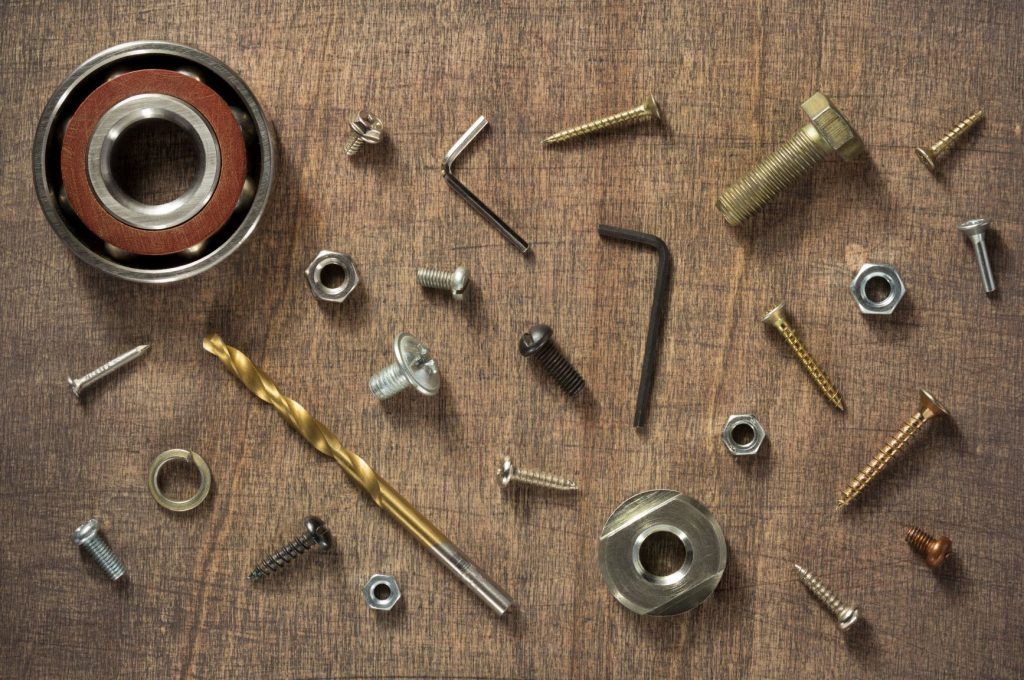The moment you step into a woodworking workshop one can’t help but notice the sensory experience that ensues, the distinctly unique scents of different woods, the different sounds of woodworking machinery, the touch of that perfectly sanded tabletop; There’s something truly satisfying about turning a few boards of timber into a handcrafted showpiece. Without a doubt working with wood continues to be a popular hobby and trade that is continuing to grow in popularity across Australia. This week, our team has put together 10 important woodworking safety tips to help ensure working with wood is not only enjoyable but is as safe as possible as well!
10 Must-Know Woodworking Safety Tips
Using Personal Protective Equipment (PPE)
One of the most important woodworking safety rules is ensuring that the moment you step into the workshop that you are equipped with all of the PPE that you need to safely enjoy the hobby. This ranges from wearing approved safety glasses, a dust mask to avoid sawdust inhalation, a respirator to avoid toxic fumes, steel cap safety boots to protect your feet from falling wood to earplugs or earmuffs to reduce noise. There are a lot of great options available on the market at a range of price points, our top tip is to ensure that all of your PPE meets relevant safety standards for maximum protection.
Wearing the Right Clothing
When it comes to woodworking safety rules wearing the right clothing may not always be the first rule that comes to mind. It’s best-practice to avoid wearing loose-fitting clothing as loose clothes can quickly find their way into a spinning saw blade or cutter head. It’s important to wear clothes that are comfortable with but will also aid in protecting your body from flying wood chips.
Using a Single Extension Cord
While using a power board may provide a bit of extra convenience by having several tools powered at the same time; getting into the habit of only using a single extension cord so that only one power tool is connected at a time, is a woodworking safety tip that not only increases a woodworker’s awareness but also reduces the chance of a power tool unexpectantly turning on.
Avoiding Distractions
It only takes that single distraction to momentarily lose concentration in the workshop. When using woodworking machines and power tools it’s always a good idea to take your time to focus on the task at hand; Avoid the temptation to answer that ringing cellphone or post that latest Instagram update until all tools have been safely turned off.
Continual Learning
Continual learning is important in any hobby, take the time to really read product manuals for every new tool brought into the workshop, revisit manuals of tools that you’re already comfortable with every once and a while for a quick refresher and see if there are any woodworking courses in your local area where you can pick up and learn new skills. Whether you’re just getting started on your woodworking journey or have been crafting showpieces for decades there’s always something new to be learnt in the wonderful hobby of woodworking.
Asking for Help When you Need It
Working with wood can put a physical strain on even the most seasoned of woodworkers; With some hardwoods such as Ironbark weighing in at 1120 kilograms per cubic meter, that stunning Ironbark tabletop can quickly weigh in at 100 kilos. Resist the temptation of moving it around the workshop on your own and always ask for that extra helping hand. Not only will it make moving heavier projects around vastly easier but it also reduces the risk of possible injury.
Maintaining a Clean and Tidy Workshop
One of the common woodworking safety rules that is often overlooked is maintaining a clean and tidy workshop. Sawdust, offcuts and even hardened glue may not seem like an immediate concern but over-time these woodworking byproducts can quickly build up and pose a potential safety hazard. When you maintain a clean and tidy workshop the risk of accidentally stumbling or getting sawdust particles in your eye at a pivotal moment is greatly reduced.
Keeping Your Blades and Bits Sharp
Just as a dull kitchen knife is more dangerous than a sharp one, the same can be said for woodworking blades and bits. When a blade is not sharp both the blade and woodworker need to work harder to complete the task at hand further increasing the chances of kick back or binding. Having your blades and bits sharpened professionally will also help ensure that you’re getting the cleanest cut possible and is one of the safety precautions in woodworking that often gets neglected by woodworkers just getting started.
Using a Push Stick
In the spur of the moment it might be tempting to attempt to carefully push offcuts or sawdust away from a spinning blade; This not only significantly increase the risk of a serious accident but it is also a completely unnecessary risk. Instead, buy or make your own push sticks which serve as a buffer between your fingers and the blade. If a task requires you dislodge jammed cut-offs from a blade, ensure the tool in question is completed depowered before removal.
Checking Wood Before Starting
While it’s always good practice to check all materials that you’ll be working with before starting for anything that may pose a safety hazard, this is especially true when working with reclaimed wood. Embedded nails and screws don’t mix well with spinning blades and can damage wood stock, cutter heads and also increases the chances of kick back occurring.
Interested to Find Out More?
We hope you’ve enjoyed reading our top 10 woodworking safety tips to help you get the most out of working with wood. Whether you’re a novice woodworker just starting your first project or a seasoned craftsman that loves to just talk shop, don’t hesitate to get in touch with our friendly timber supplies Brisbane team at Versace timbers to learn more about safety precautions in woodworking or for help finding that unique piece of timber for your next project.

